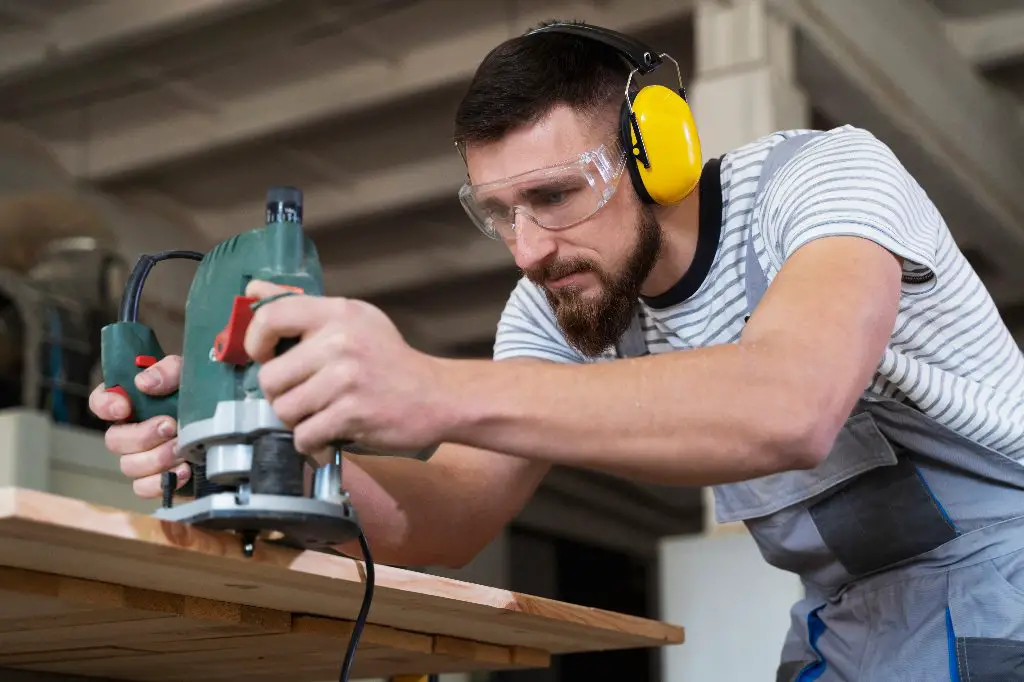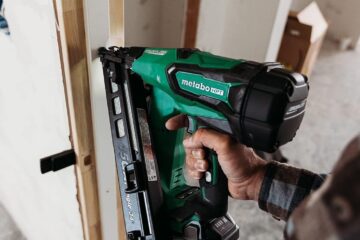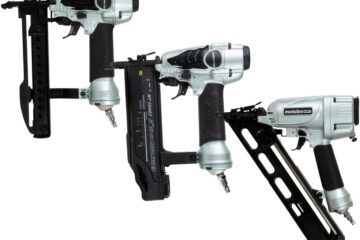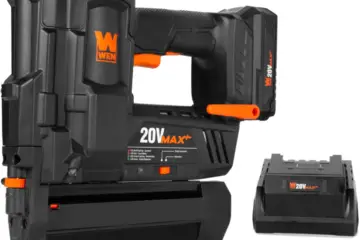Nail guns have revolutionized construction and DIY projects, providing speed, efficiency, and precision that traditional hammers can’t match. But as helpful as these tools are, one common question frequently arises: how loud is a nail gun? Whether you’re working on a quiet residential project or dealing with noise concerns in a commercial setting, understanding the noise levels of nail guns is essential.
In this comprehensive guide, we’ll dive into the decibel levels of different types of nail guns, the factors affecting the noise they produce, and practical tips to manage and reduce that noise. We’ll also address common concerns about hearing protection and provide insights into industry regulations regarding noise exposure.
Why do Noise Levels Matter?
Noise in the workplace or at home can impact both your hearing health and comfort. Prolonged exposure to loud noises, particularly above 85 decibels (dB), can lead to hearing damage over time. Nail guns, like other power tools, can emit high-decibel sounds that may pose risks if proper precautions aren’t taken.
But just how loud is a nail gun, and what should you do to protect yourself?
How Loud Is a Nail Gun? Decibel Levels Explained
Nail guns are available in several types pneumatic, electric, and cordless and each of these can vary in noise output. The loudness of nail guns is usually measured in decibels (dB), a unit that expresses the intensity of sound.
Here’s a breakdown of the noise levels of different nail gun types:
1. Pneumatic Nail Guns
Pneumatic nail guns are powered by compressed air and are among the loudest types of nailers. The loud noise primarily comes from the release of compressed air combined with the driving force of the nail.
Typically, pneumatic nail guns can produce sound levels between 90 to 100 decibels.
Example: Framing Nailers
Framing nailers, which are often pneumatic, can reach up to 100 dB, a level comparable to a power lawn mower or even a car horn. If used consistently without hearing protection, this can pose significant risks to the user’s hearing.
2. Electric Nail Guns
Electric nail guns, particularly corded ones, are generally quieter than pneumatic nailers but can still be fairly noisy, with noise levels ranging between 80 and 90 decibels.
This noise is primarily generated by the electric motor, which can be less jarring than compressed air but still loud enough to require hearing protection.
3. Cordless Nail Guns
Cordless (battery-powered) nail guns are relatively quiet compared to pneumatic models, but their decibel levels typically range from 85 to 95 dB.
While still capable of producing loud sounds, cordless nailers are often more manageable in terms of noise due to the absence of an air compressor.
Noise Level Comparisons for Context
To give you a better idea of how loud a nail gun is, here’s a comparison with common sounds:
- Whisper: 30 dB
- Conversation: 60 dB
- City Traffic: 85 dB
- Pneumatic Nail Gun: 100 dB
- Jet Engine (Takeoff): 120 dB
As you can see, most nail guns fall into the same decibel range as city traffic or lawn equipment. At these levels, continuous exposure without hearing protection can lead to hearing damage.
Factors Affecting Nail Gun Noise Levels
Several factors can influence how loud a nail gun is in operation:
1. Type of Power Source
As mentioned, pneumatic nail guns tend to be louder due to the compressed air mechanism, while electric and battery-powered options are somewhat quieter.
2. Nail Size and Type
Larger nails require more force to drive into the material, leading to louder sounds. Framing nailers, for instance, tend to be louder than finish or brad nailers because they drive thicker nails into dense materials like wood.
3. The Material Being Nailed
Denser materials like hardwood create more resistance, which can result in a louder sound when the nail is driven in. Softer materials like drywall might produce less noise.
4. Work Environment
The acoustics of your workspace can amplify the sound of a nail gun. For instance, enclosed areas with hard surfaces, such as basements or garages, can echo and amplify noise, making the tool sound louder than in open spaces.
Practical Tips for Managing Nail Gun Noise
1. Wear Hearing Protection
The most effective way to protect yourself from the noise produced by nail guns is to wear appropriate hearing protection. Earplugs or noise-canceling earmuffs can reduce sound exposure by up to 30 dB, making a huge difference when working with loud tools.
2. Use Quieter Models
If noise is a significant concern, consider using an electric or cordless nail gun instead of a pneumatic model. Although they can still be loud, these alternatives are typically quieter than air-powered guns.
3. Optimize the Work Environment
Working in well-ventilated, open spaces can help dissipate the sound. Additionally, using sound-dampening materials like foam or rubber mats around the work area can minimize echoes and reduce noise.
4. Limit Exposure Time
Even with hearing protection, limiting the amount of time spent using a loud tool can reduce the risk of hearing damage. Take frequent breaks to reduce your overall exposure.
5. Maintain Your Nail Gun
Keeping your nail gun in good condition can help reduce noise. Worn-out parts, loose components, or air leaks in pneumatic models can lead to increased noise during operation. Regular maintenance can keep the noise levels down and improve the tool’s performance.
Industry Regulations on Noise Exposure
In industries where nail guns are used regularly, it’s essential to follow Occupational Safety and Health Administration (OSHA) guidelines for noise exposure. OSHA recommends that workers not be exposed to noise levels above 85 dB for more than eight hours a day without hearing protection. For every increase of 3 dB, the safe exposure time is cut in half, making nail guns operating at 100 dB safe for just 15 minutes of exposure without protection.
Construction sites and workshops should have noise assessments to ensure that workers are not exposed to harmful levels of noise and should provide hearing protection as necessary.
Personal Experience: The Noise of Nail Guns in Real Projects
Having worked with both pneumatic and cordless nail guns on a variety of projects, I’ve found that the noise level can vary depending on the type of tool and the material you’re working with. When using a pneumatic framing nailer on a recent home renovation, the loud crack of the gun firing was noticeable even with ear protection. In contrast, a cordless finish nailer was significantly quieter but still required earplugs to prevent fatigue over time.
Professionals in the field often share similar experiences, with most recommending hearing protection no matter the type of nail gun being used. One contractor I spoke to said, “I used to think cordless nail guns were quiet enough to go without ear protection, but after a few long days on the job, I quickly learned that even small amounts of noise add up.”
Conclusion: How to Handle the Noise of a Nail Gun
Nail guns are powerful and indispensable tools for construction and DIY projects, but they do come with noise concerns. Understanding how loud a nail gun can be—ranging from 85 to 100 dB—and taking the right steps to manage that noise will protect your hearing and create a more comfortable work environment.
By using quieter models, wearing proper hearing protection, and maintaining your tools, you can mitigate the impact of noise and work safely. Always adhere to industry safety standards, such as OSHA’s noise exposure guidelines, to ensure a safe and productive work environment.




